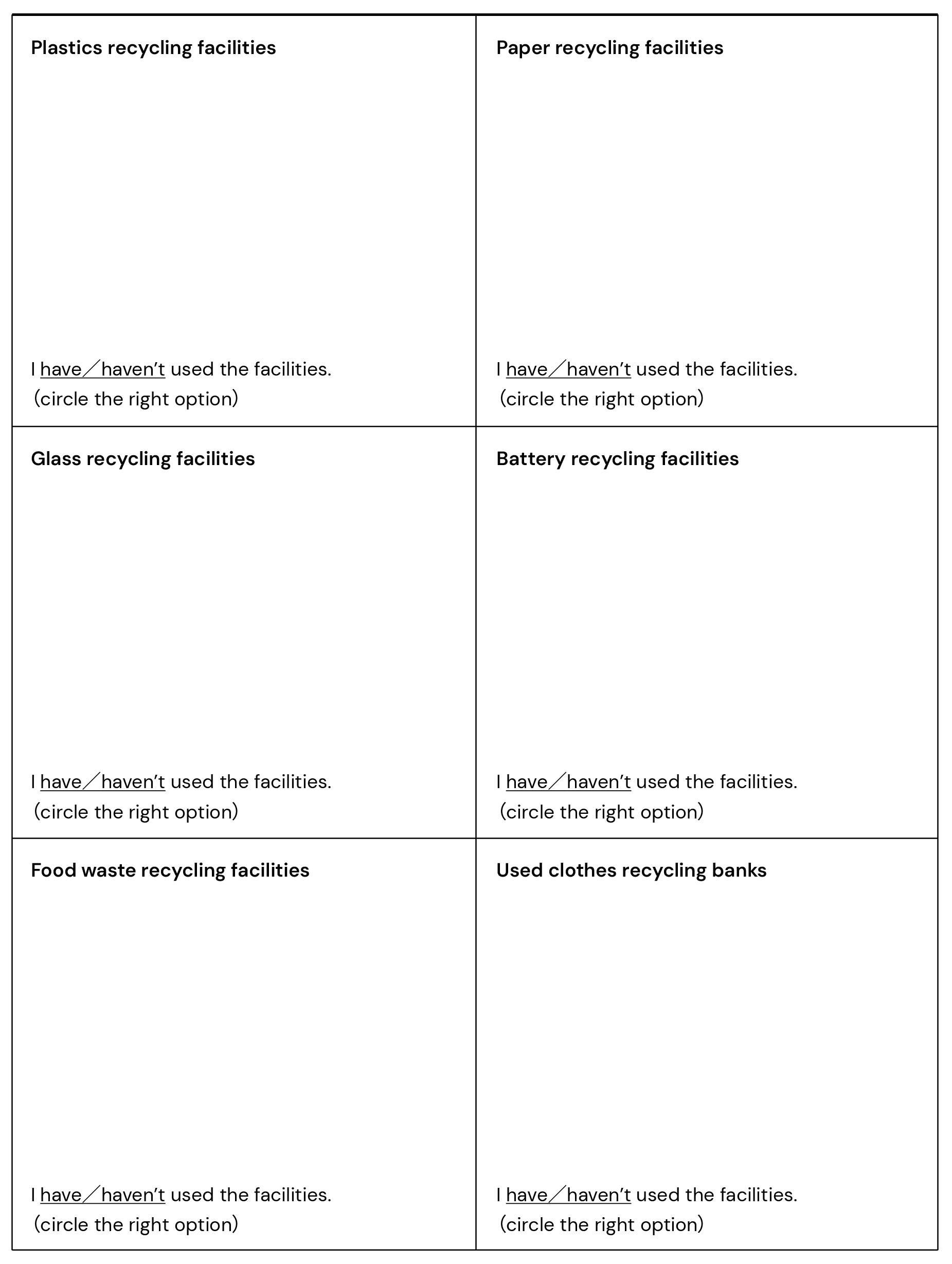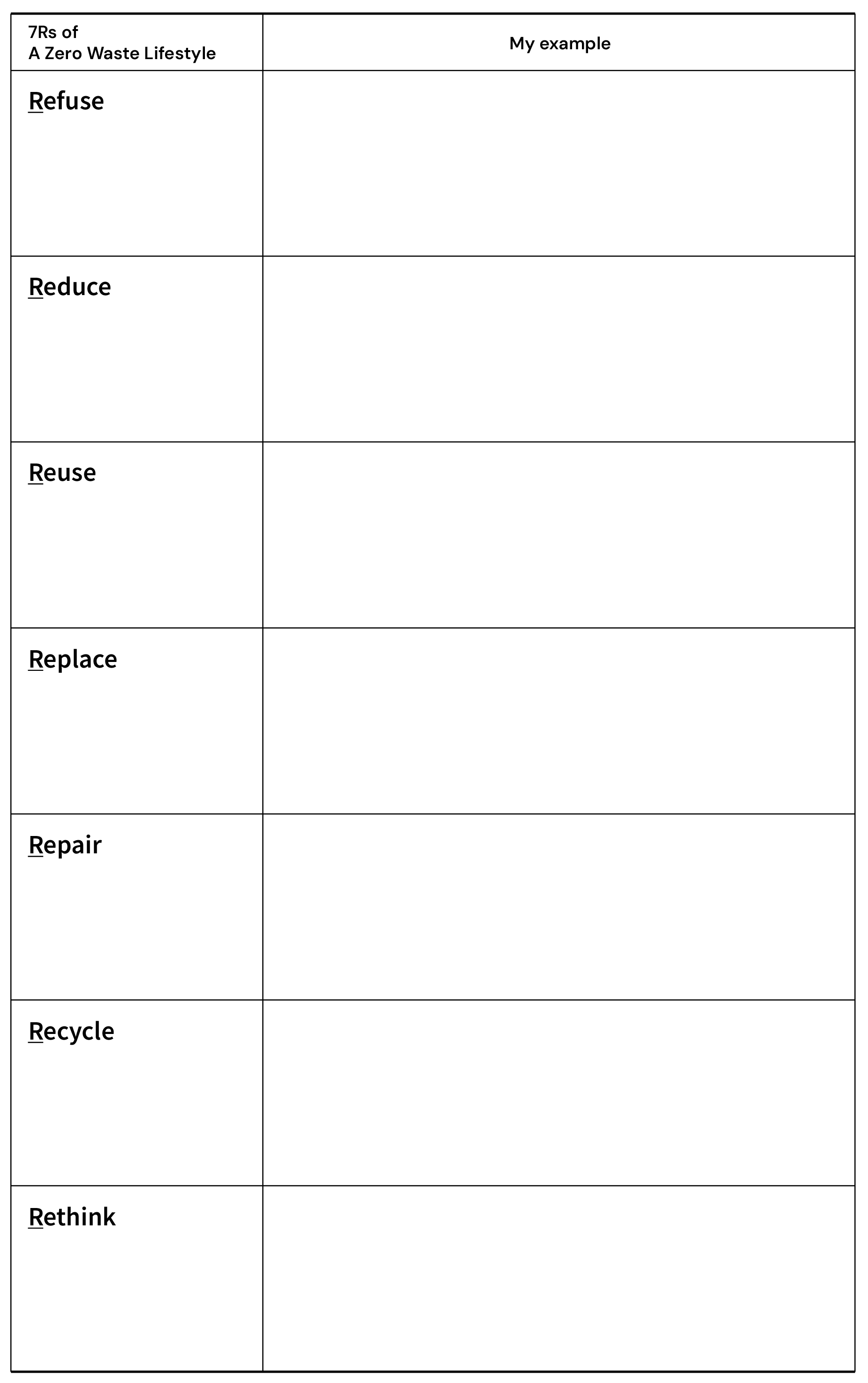Students should search out for recycling facilities near home, take photos of them and make prints.
Can you find the following recycling facilities near your home? Take photos of them and post here (leave it blank if you cannot find any such facilities).

Resources are recovered through recycling. Write the process of recycling and recovery accordingly.






Citizens buy products made from recycled raw materials
Citizens put recyclables into recycling facilities
Recyclers sell the recycled raw materials
Recyclers sort the recyclable and remove unwanted substances
Recyclers turn recyclables into recycled raw materials
Producers make products from recycled raw materials
Transport workers collect recyclables at the recycling collection points.
Write three benefits of recycling

What is the first product bought by the young man?
Why does the young man buy lots of new clothes?
The young man bought many bags of new clothes happily and:
He tried ____ pieces of new clothes in front the mirror.
Based on the number of the clothes he put on and those on the bed, I think he bought a total of 1 to 2 / 3 to 4 / over 10 pieces of new clothes.
From his face, I think he was happy with ____ pieces of new clothes.
He ________________ clothes he didn’t like.
I estimate that he recycled 1 to 2 / 3 to 4 / over 10 pieces of new clothes.
Please write down the words that show up at the end of the video
________ works; ________ works better
Below are three green living practices, arrange them in order of priority:
(Fill in blanks with representing alphabets)


Do you agree that recycling is the most effective solution to solve waste problems? Why?
Below are the principles of “7Rs of A Zero Waste Lifestyle”, please give your own example.
